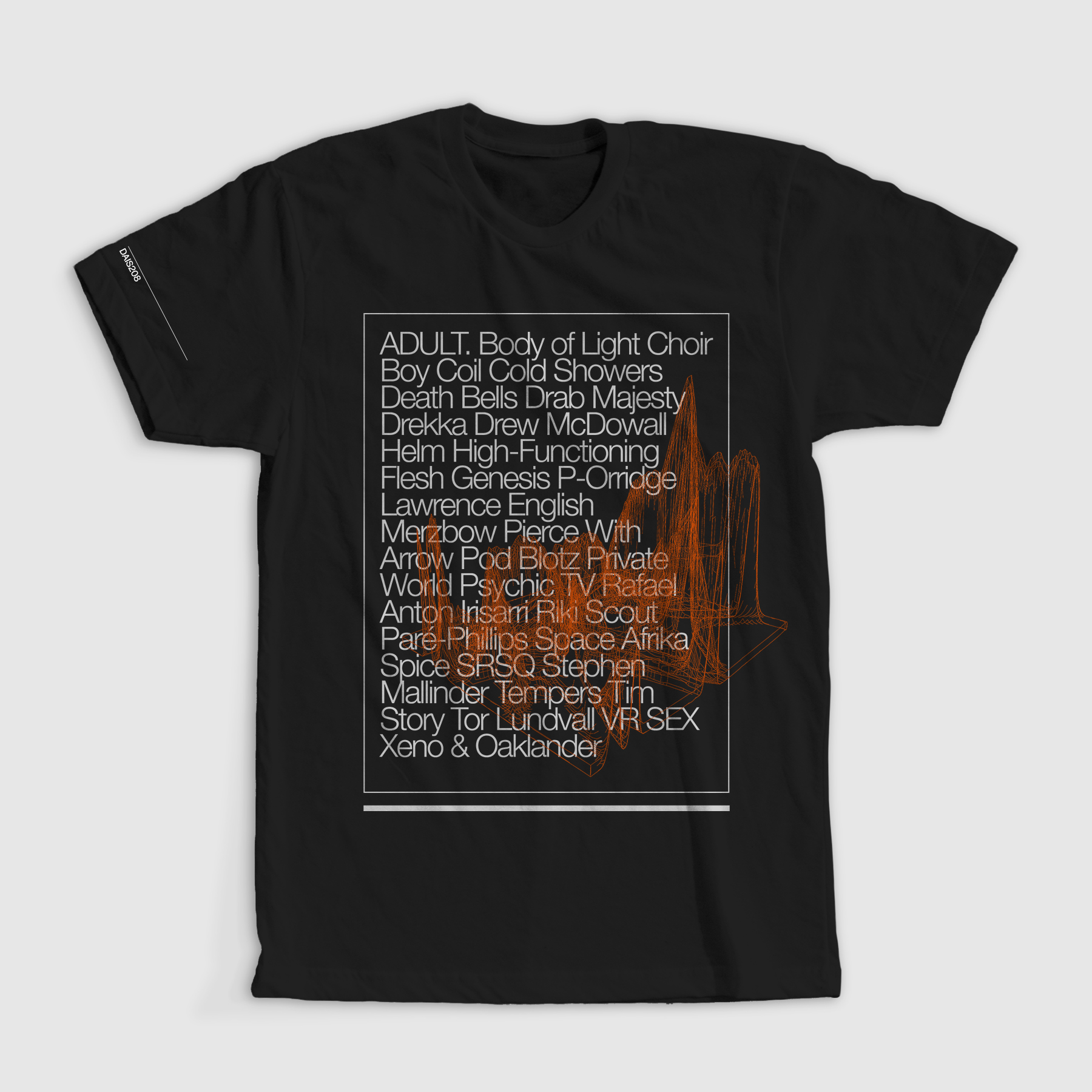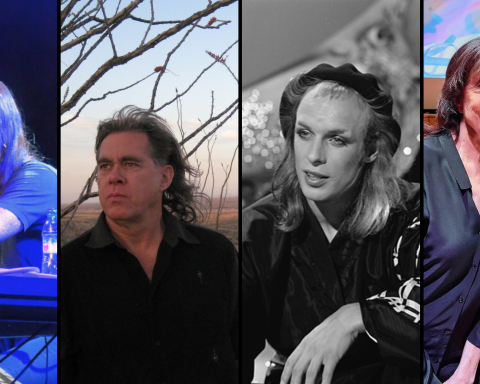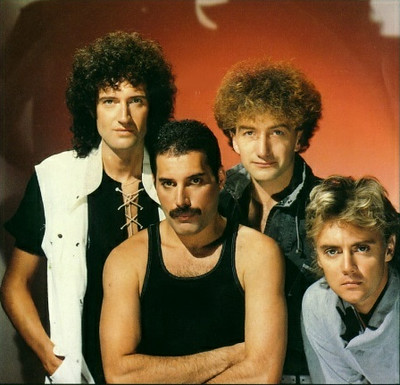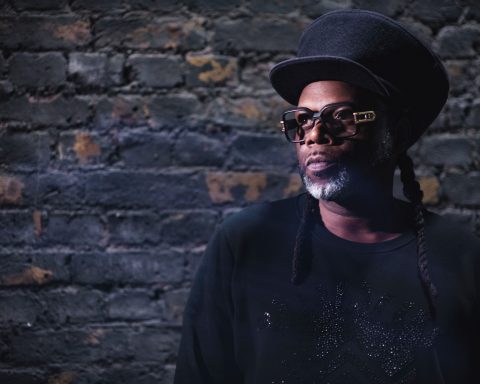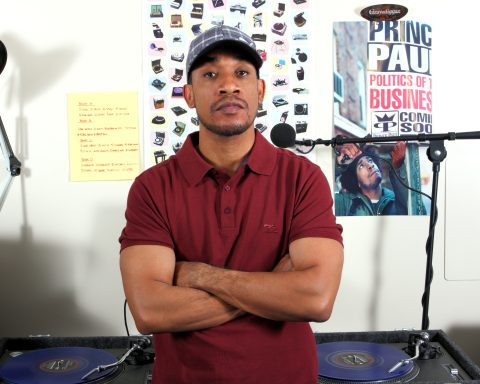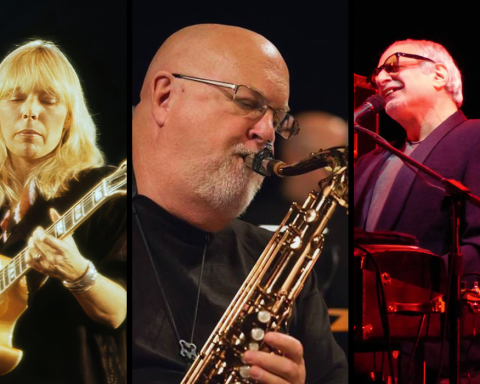From regional outposts like Sun and Motown to the niche rosters of 4AD and Kill Rock Stars, the label as tastemaker has many notable precedents. In this distinguished lineage sits Dais Records. Founded and lovingly curated by like-minded music aesthetes Gibby Miller and Ryan Martin, Dais sits at the intersection of post-punk, synth-pop, industrial, ambient, and a host of other subgenres. To mark its 15th anniversary, Dais collaborated with Roland Lifestyle to create a clothing line celebrating its synergy with the company’s instruments. Via the words of Miller and Martin, as well as artists Drab Majesty, Riki, Space Afrika, and ADULT., emerges the story of this important imprint—one that defies categorization and convention.
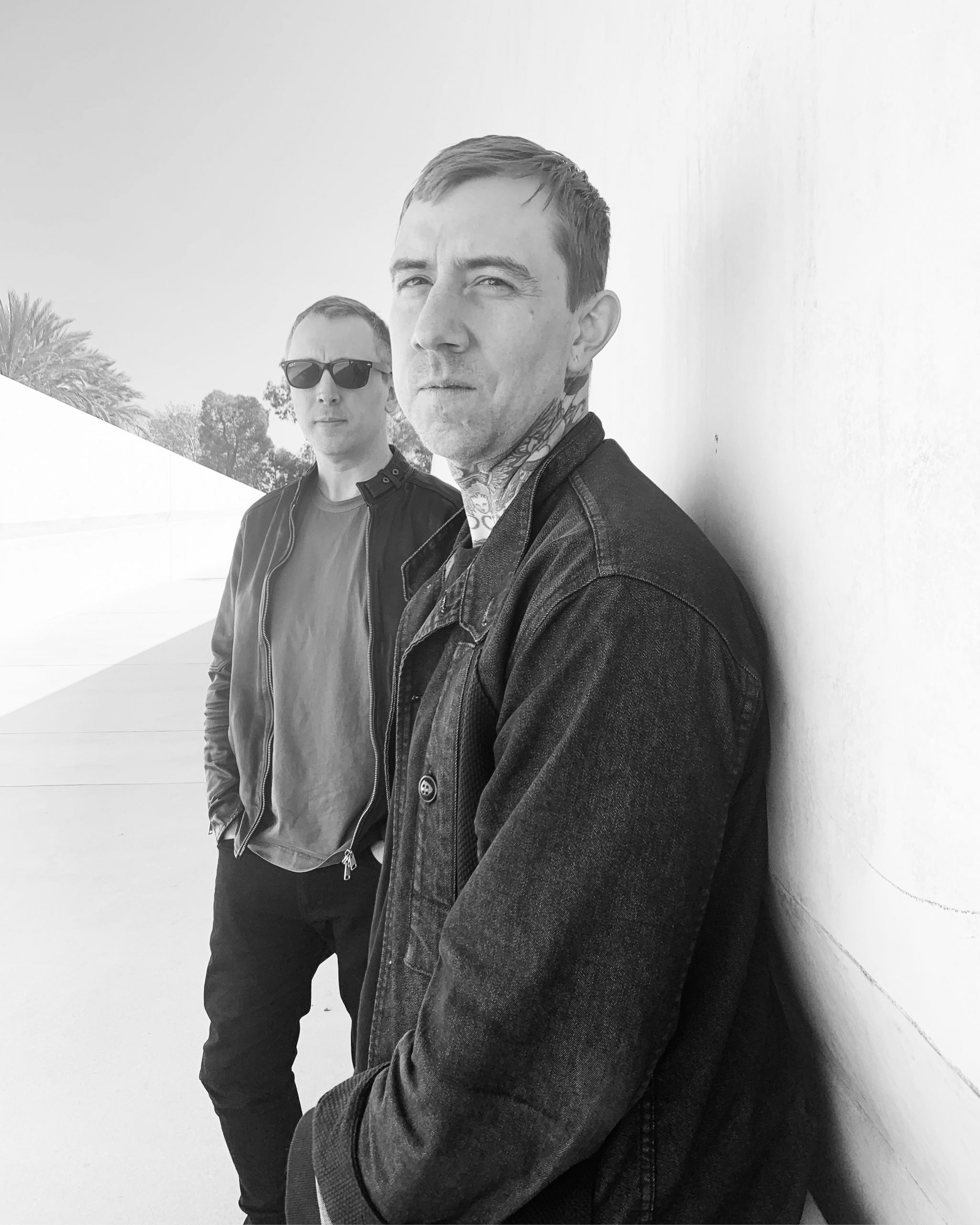
A Powerful Partnership
Miller and Martin conceived Dais as a platform to release Early Worm, a mythical collection of recordings by industrial godparent Genesis P-Orridge of Throbbing Gristle and Psychic TV. Martin recalls talking to Miller about the discovery he made as archivist for P-Orridge in New York. “Gibby had a Throbbing Gristle tattoo on the side of his neck. I thought, ‘He’s the only one I know who is going to get the gravity of what I found.’”
Miller says, “I called Ryan on my way home from work in L.A., and I’d reserved the URL. We loved the name Dais, which means a raised platform for a throne.”
The influential nature of Early Worm was widespread. “It was Genesis and friends recording music in her attic and sending that off to get turned into a single acetate record,” Miller explains. “Almost like the Rosetta Stone of industrial music.”
Notoriety Knocks
The release kickstarted the label’s profile, hoisting Dais into critical acclaim. “We took it over the finish line with credit cards and a prayer,” Miller jokes. “Immediately, we gained relevancy. We were in Wire magazine out of the gate. It was like, ‘Who are these two kids, and how did they get this?’”
"We were in Wire magazine out of the gate. It was like, ‘Who are these two kids, and how did they get this?’"
Gibby Miller
Dais used its newfound notoriety to curate a discography of early label artists like Psychic TV, Tor Lundvall, Iceage, and Cold Cave. It was a wild roster out the gate, one that lived up to an early website motto: “Welcome to the howling hills.”
Over the last decade and a half, the label has continued to expand its scope, releasing music by a bevy of uncompromising musical acts like Choir Boy, Tempers, Xeno & Oaklander, Stephen Mallinder, Hiro Kone, Space Afrika, and High Vis. Some of those names—like Drab Majesty—have put out the bulk of their catalog on Dais. Others, like ADULT., had a cult following and their own imprint before joining up with the label. Along the way, tenacity and flexibility remained essential to the growth of Dais.
“It was complete learning on the job,” Miller explains. “We had to be self-taught because we didn’t have these other apparatuses at our disposal until way later. When we got exclusive distribution, they were surprised how far we’d got on our own.”
Two Coasts—One Vision
The bicoastal nature of Dais has benefits as well. “Over time, Ryan being in New York and my being in California gave us a nationwide reach and visibility,” Miller says. “So we heard a lot of music and received a lot of demos from outside of our respective scenes.”
These days, the Dais sound is something difficult to define, speaking to the pair’s unique telepathy. “The label’s sound shifts drastically, but in a strange way that only me and Gibby understand,” Martin says. “It’ll make sense. But it’s not going to be just like the thing you heard last time.”
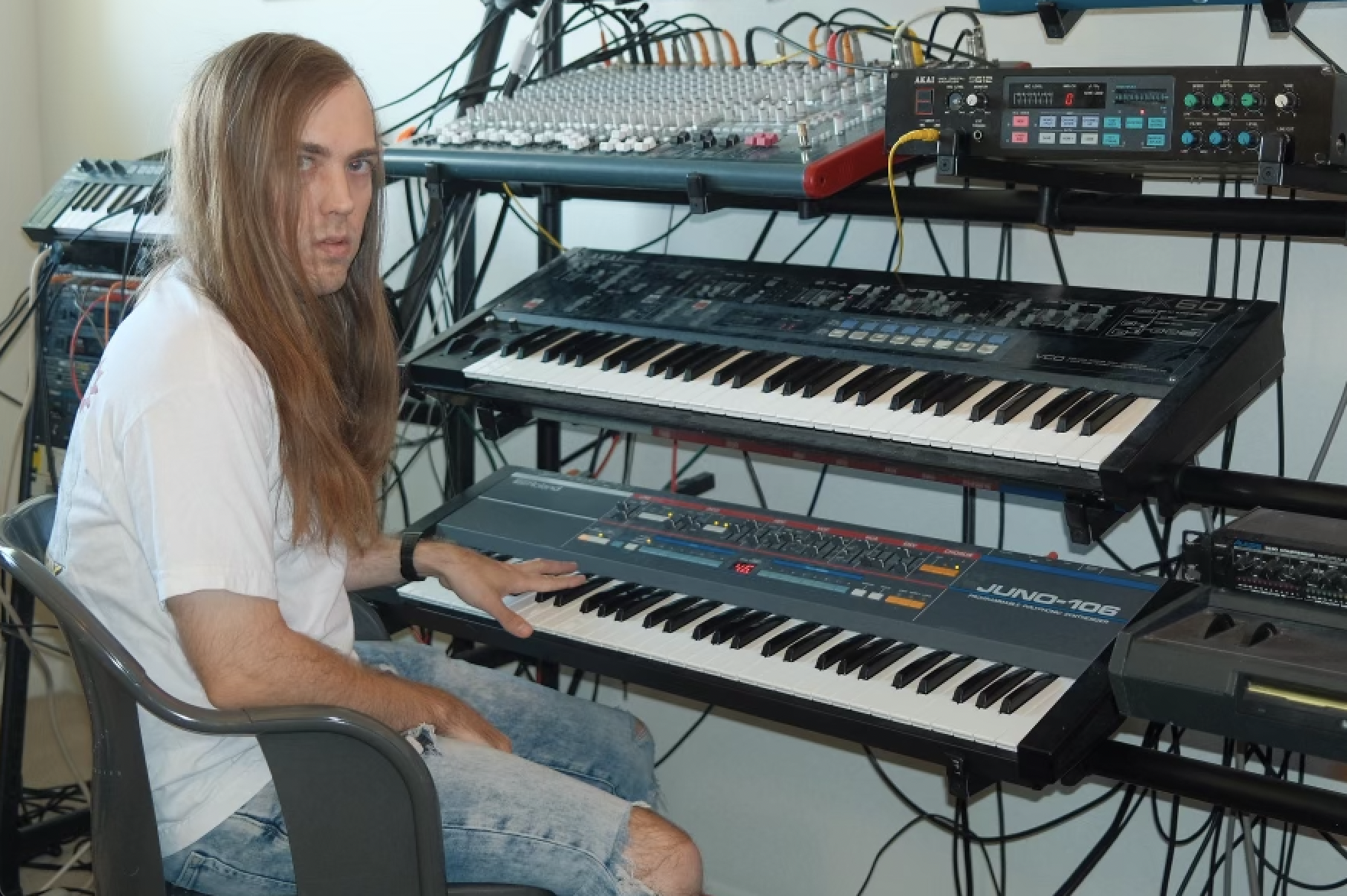

"The label's sound shifts drastically, but in a way that only me and Gibby understand. It's not going to be just like the thing you heard last time."
Ryan Martin
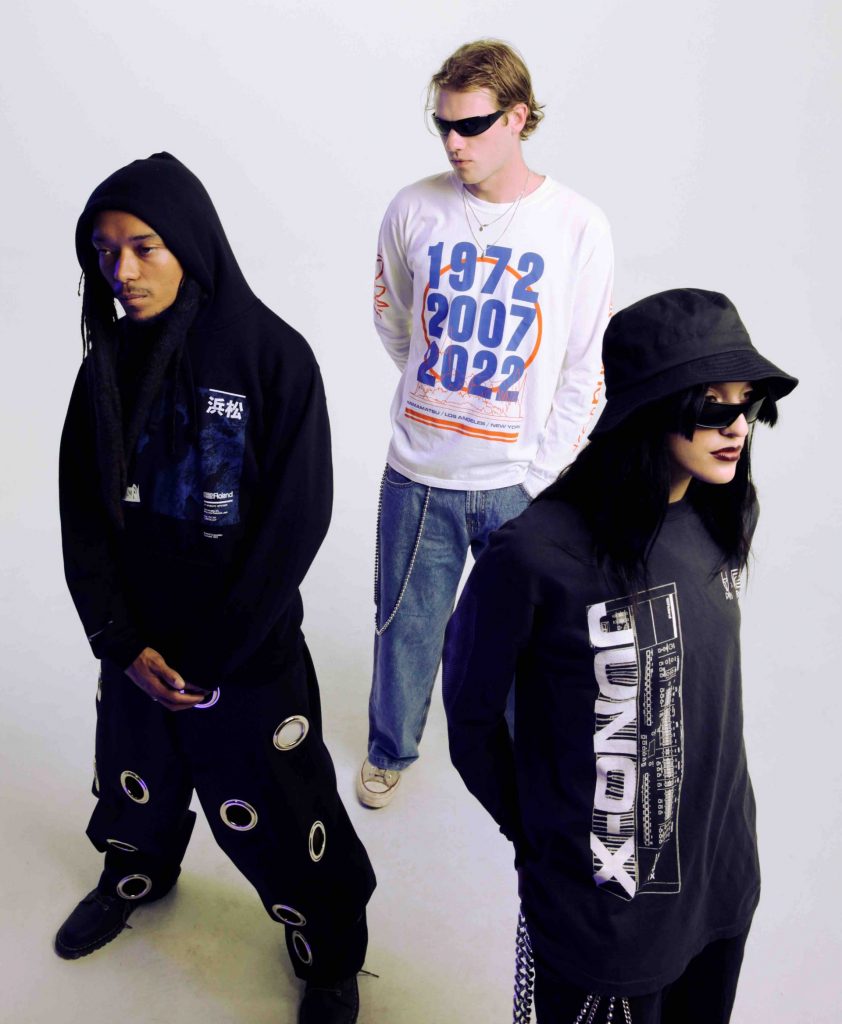

Dais x Roland
From the ADULT. studio—stocked with vintage TR-808, TR-707, CR-78, and other goodies—to Drab Majesty’s twin JC-120s and SH-101, the Dais stable finds endless inspiration from Roland gear. It’s the same for its founders. The apparel collaboration with Roland is a natural extension of this interest
“Jon from Cold Showers introduced us to Roland Lifestyle,” Miller reveals. “But as far as awareness of the Roland brand, that goes back 20 years to when I got my first Groovebox at a guitar store in Boston. It’s ingrained.”
Martin has vivid Roland memories as well. “A couple of friends and I had a noise collective happening in the mid-’90s. I got rid of my Realistic keyboard and got an actual JUNO from a friend.”
He also praises a particular piece of Roland synthesizer history. “If you want instant amazing industrial music, get a Roland SH-09,” Martin affirms. “Take the input and output, feed it back into itself, and then play it through. You’ll sound like the world’s best early ’80s, late ’70s industrial record.”
Connection
The apparel collection, in collaboration with bighouse and Roland Lifestyle, celebrates Dais’ 15th and Roland’s 50th anniversaries. It also marks the first time Roland has worked with a record label.
The capsule, designed by Dais creative director Nathaniel Young, highlights each company’s founding year and location. “Ryan and I have done a lot of exploring in the brand and apparel space. And this is the first collab we’ve done,” Miller says. “There’s so much synergy here. It just totally makes sense.”
DRAB MAJESTY
The lush, neon-drenched sound of Drab Majesty lives both in and out of time. As Deb DeMure, multi-instrumentalist Andrew Clinco—alongside partner Mona D.—weaves layers of incandescent guitar over undulating synth lines that evoke ’80s hitmakers and shoegaze legends in equal measure.
LA at Night
You call California home. What’s it like creating such moody music in such a sunny locale?
It’s sunny during the day, but L.A. has a very intense contrast. A new kind of psychology illuminates the city at night. The freaks come out at night. Inspirations typically come from the new energies that emerge in the evenings. That’s where my vision has stayed attuned since I was a teenager.
Two Sticks to Six Strings
Prior to Drab Majesty, listeners knew you as a drummer. Do you still play drums in the studio on the recordings?
The drum recordings are mostly drum machines, but I do all the programming. I write all those grooves and definitely orchestrate it all.
What instrument did you start with?
I got a guitar for my seventh birthday and kind of dabbled a little bit for a couple of years and then decided drums were the way. I was blessed to have a father who was a career musician. Drums became my instrument for ten-plus years, and then I rediscovered the guitar and began to studiously commit to it in 2011.
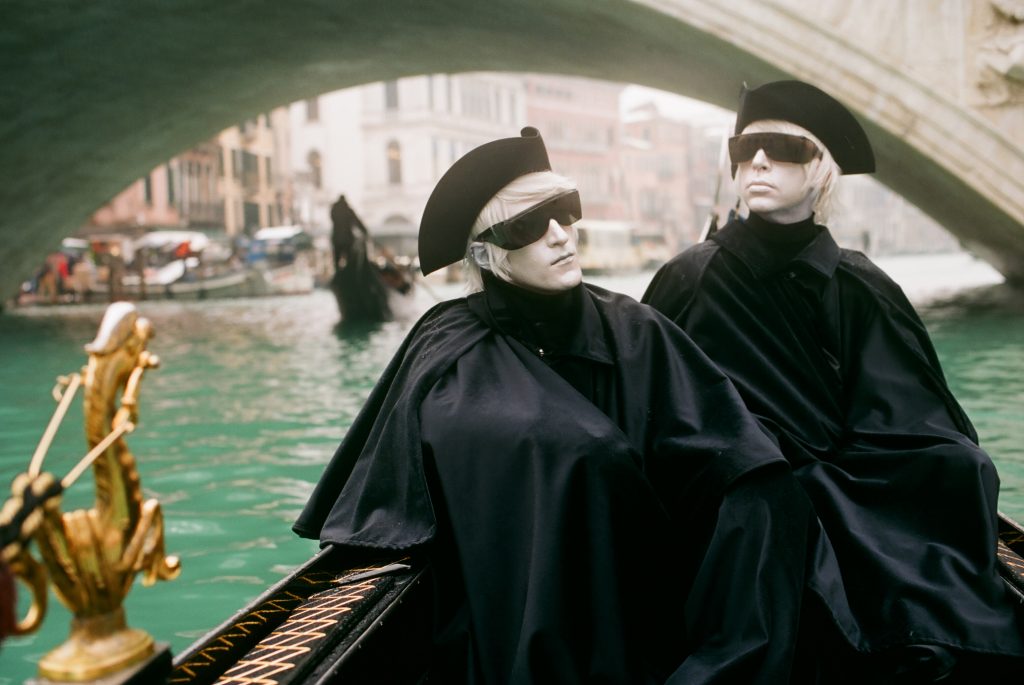
"It's sunny during the day, but L.A. has a very intense contrast. A new kind of psychology illuminates the city at night."
Andrew Clinco
Was learning guitar part of your process of developing the Drab Majesty sound?
I’d always been fiddling around on my guitar. My dad plays right-handed and I play left-handed. That informed a lot of my oddball tunings and idiosyncratic way of playing the guitar in general. I also had some dexterity that came from my hours of drumming.
Sonic Evolution
What makes synths useful songwriting tools?
I think synths are incredibly useful to the point of creating option paralysis when it comes to finding the sound. They can support and create an incredible harmonic and emotional weight. I typically like to use them to harmonize with the guitars. They do something that’s subliminal but also dimensional.
How has the sound of Drab Majesty changed over its releases?
The songwriting is getting a lot more intricate, and the fingerpicking is getting more nuanced. Going forward, I’m way into the like hyper-layered guitar stuff. We’re going into acoustic 12-string territory.
Do you record alone?
I demo myself, but I prefer to work with an engineer as a co-producer. Over the last three years, my home studio was involved in recording aside from drums and loud amps.
Channeling and Influences
You describe Deb Demure as a vessel—like you tap into something when you’re writing this music.
Definitely. I sit down and consciously go into the mode of channeling. It’s kind of amazing when the songs get written. The way the songs transpire is immediate and feels like I’m being gifted some of these ideas. It’s remarkable.
What are your key visual and lyrical influences?
Drab Majesty is an amalgam of everything I’m interested in. From clerical garb to the Hollywood public access TV I grew up watching as a kid, the aesthetics of this project pull from a massive database of imagery that I absorbed living in Los Angeles. Liquid Sky, for sure. Jodorowsky is also a big influence.
Modern Mirror is based on Ovid’s Narcissus myth. I think Drab stuff on a spiritual level is therapeutic or holistic. Drab is almost theatrical. It’s performative. People meet me outside of crowds and expect me to be this super ethereal being where I’m not really.
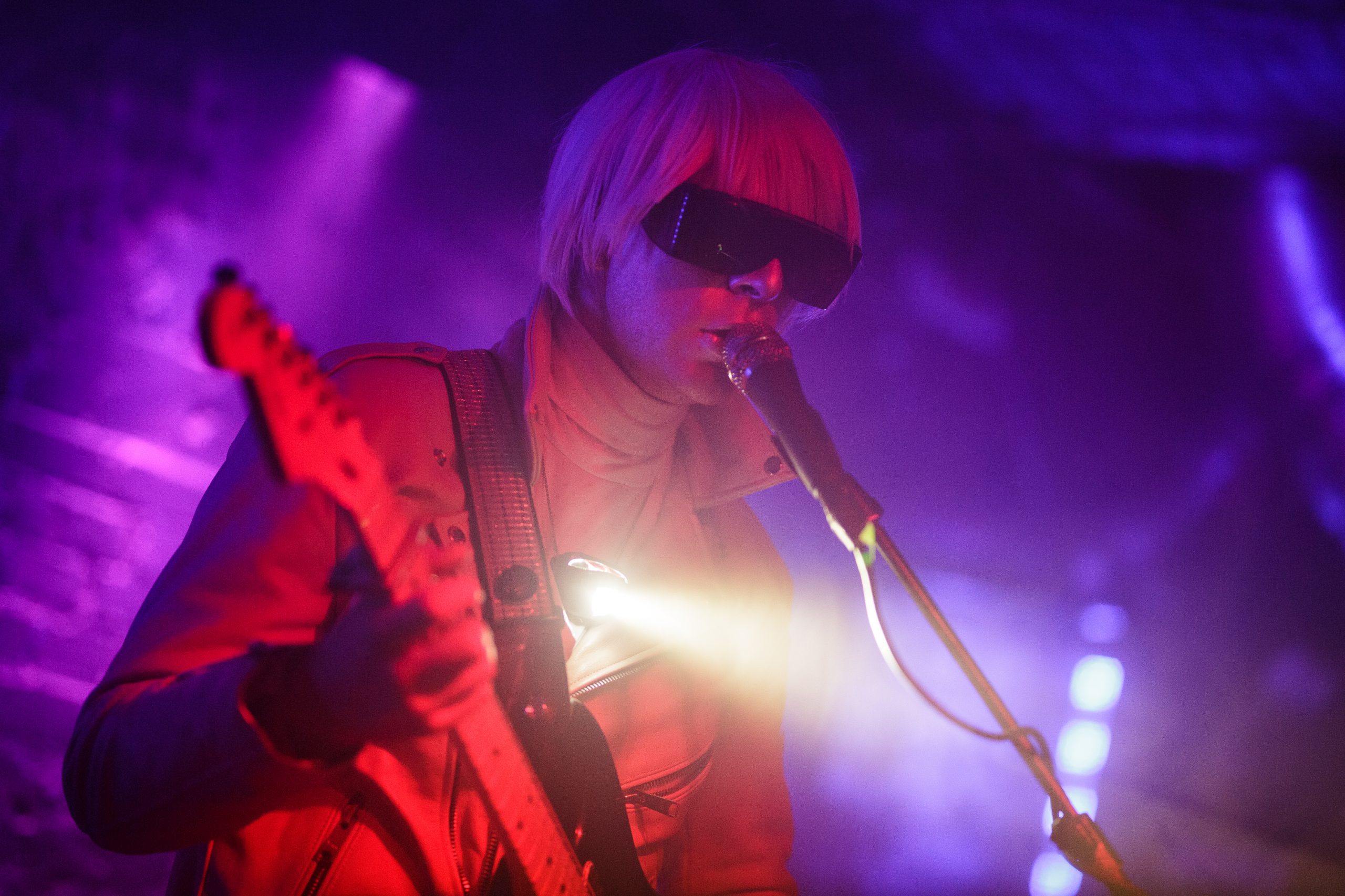
"Dais is extremely professional in the way it's run, but they are great at maintaining a degree of levity that keeps everything fun."
Andrew Clinco
Dais Roster, Roland Collection
What’s it like being part of the Dais roster?
Besides being my amplification system and some of my closest friends, nothing ever feels like business. Dais is extremely professional in how it’s run, but they are great at maintaining a degree of levity that keeps everything fun. There’s like 100% trust. They’ve never once made a comment about the way something should sound. They’re just a delight to work with. I really can’t say enough about them.
Sonically, all the various artists are uncompromising. There’s a shared ethos of doing the thing you do best and not being part of what’s trendy. Just pushing your sound forward and no pandering.
Tell us about your Roland gear.
It’s crazy to talk about Roland because I own so much. As far as effects go, I own a Space Echo, a Digital Space Echo (RE-5), a DC-50, and a DEP-5. As for synths I use my D-10, a PROMARS, a JUPITER-6, a TR-606, an SH-101, and an SH-2. I also tour with two JC-120s—one from the early ’80s and one from the ’90s.
I’m definitely a vintage weirdo, and I’m obsessed. The CR-78. I mean that is one of the sexiest drum machines of all time. It’s a museum piece. I would love to own one.
RIKI
As one of the emerging artists on the Dais roster, Riki is turning heads worldwide with her evocative new romantic paens. From her acclaimed eponymous debut through the increasingly polished production of follow-up Gold, Riki infuses lush synthscapes with earthy poetry and undeniable vocal charisma.
On Weather
“I’m from the Pacific Northwest and grew up in Portland, so we have dreary weather. I was listening to darker music and hibernating for like six months out of the year, coming out once every season. Now that I’m in L.A., the weather’s always gorgeous. It’s so stunning out there. Every day you have a carpe diem kind of thing. It’s motivating because there’s so much action happening. My music has gotten less dark, probably, but there’s still the minor-key foundation.”
On Creative Process
“It’s developed as I have become more confident as a songwriter and better technically at production. It always starts with a demo in my home. Then I’ll put everything into Ableton and move it around. A lot of final tracks have demo tracks on them still. On Gold, there were even vocal tracks from the demos that we used.”
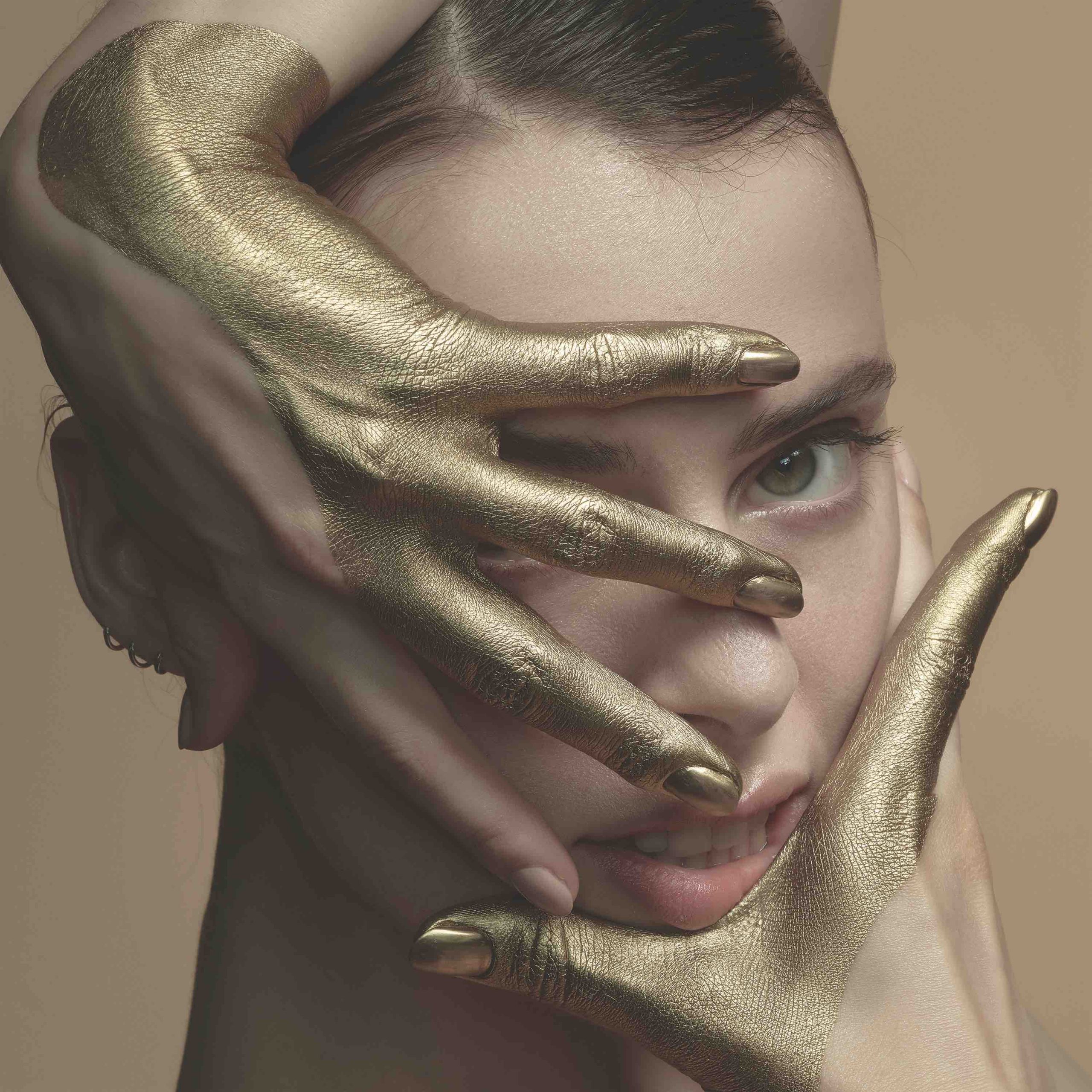
“There’s such a rich variety to synths—from organic to alien and life-changing and crazy. As a lover of sound, that’s such a treat to work with. I’ll start with some kind of arpeggiated bassline or something that just gets things going even before adding drums. I have a Roland JUNO-106. It’s a wonderful synth. That’s more for leads and really lush pads. I’ve always wanted a JUPITER-8.”
RIKI
On Riki and Gold
“The music I was doing on Riki was very dark and rooted in punk. I was excited to work with Ken Marshall on a few tracks because I’m a massive Skinny Puppy fan, and the album was produced by Matia Simovich. It had to sound like straight out of the ’80s, and I didn’t want any modern sounds because I was not into that.”
Working with Joshua Eustis of Telefon Tel Aviv on Gold was free, fun, and collaborative. I felt this base level of understanding and willingness to explore.”
“If we’re talking romantic within literature, it’s often the same kinds of things, like the overwhelming wildness of nature. There is some of that, at least stylistically, within the new romantic music of the ’80s. There’s also a love for drama and theater. I love stuff that’s over the top.”
RIKI
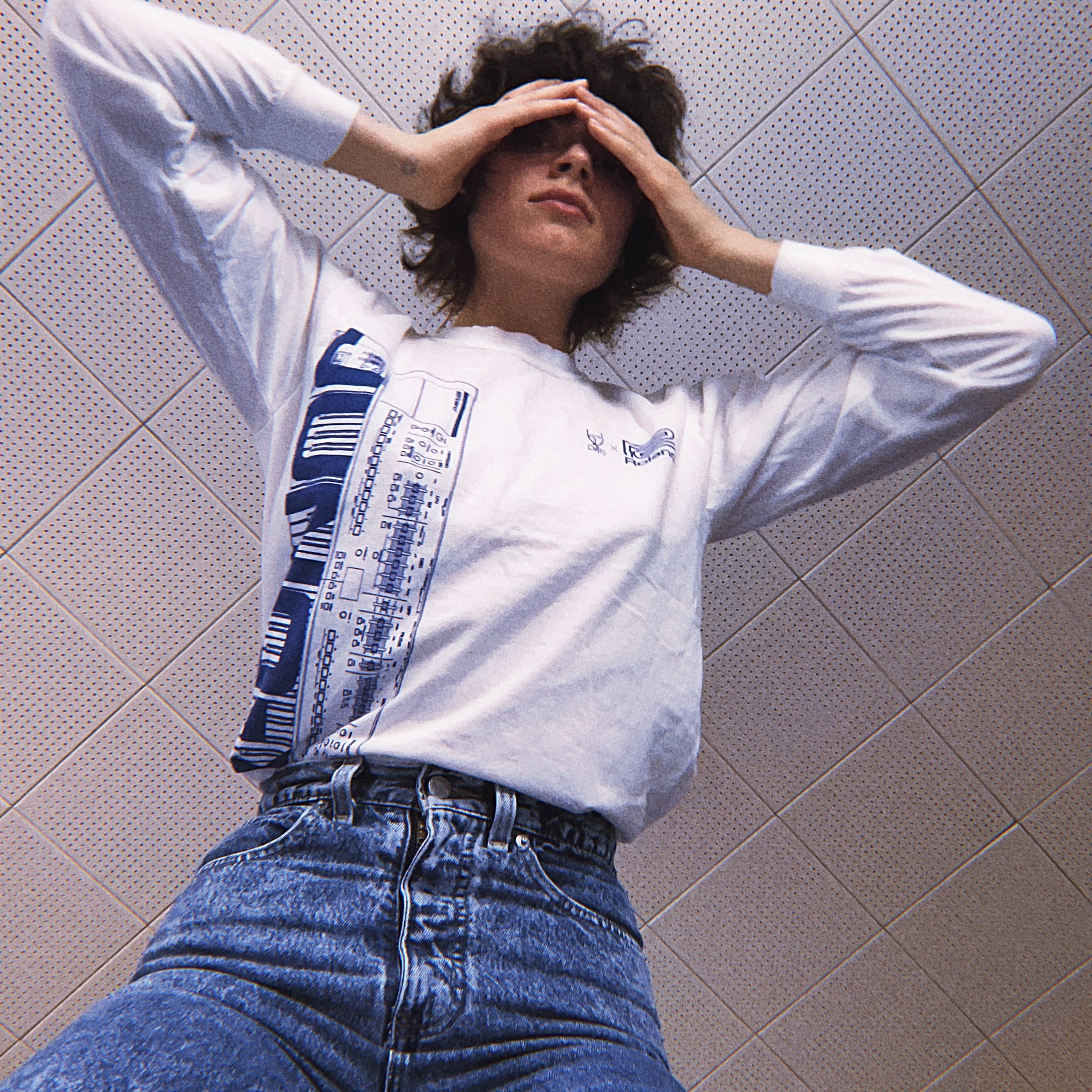
On Lyrical Inspiration
“Thematically it’s more or less the same between both albums. There’s variation, but the root conceptually is all very romantic, very feminine. There’s lots of darkness and lots of light as well—maybe more darkness. It’s all rooted in love, the cycles of nature, and things like that. I’ve also become more confident as a lyricist, so it’s a growth thing.”
On Dancing
“When I play live, it’s mainly backing track and vocals. I love to dance on stage and perform, so it leaves me free to do that, which I think is the most fun. It’s pretty freeform. I have a little toolbox of moves I like to repeat. But it’s repetition, so I think that’s why it comes off as a little more polished or rehearsed.”
On Dais
“It’s rooted in musicians. Both Gibby and Ryan have been in the music scene, so they understand being an artist. It’s not DIY, but it does have that kind of foundation. Everything’s done within this community as long as it can be, and it’s all based on people you know and trust.”
ADULT.
Detroit synth-punk act ADULT. has been creating in-your-face electronic music for twenty-five years. The duo, made up of Nicola Kuperus and Adam Lee Miller, wield sharp shards of sound carving their influence into the bedrock of the underground. Fiercely DIY, the scene veterans are now a part of the Dais roster. The pair share about their latest album, unabashed love of Roland instruments, and more.
Hometown
What is Detroit like as a creative environment, and does it play a role in the ADULT. sound?
Adam Lee Miller: It plays a role for sure. Back when we first started writing music and living there in the ’90s, it was a much rougher place. It was the Wild West. The warehouse parties were 100% illegal and off the hook. That rawness is what attracted me to Detroit and brought bands like Skinny Puppy and Ministry. Music history is so rich there, from Motown to Iggy Pop to techno. We honor that history and try to do our best.
Nicola Kuperus: The thing that’s going to sound strange is I’m kind of like, “What’s going on in Detroit?” Honestly, we came out of a two-year COVID bubble. We went on tour in March 2022, and this is like the first time we’ve been out. During the whole pandemic, we went to one concert.
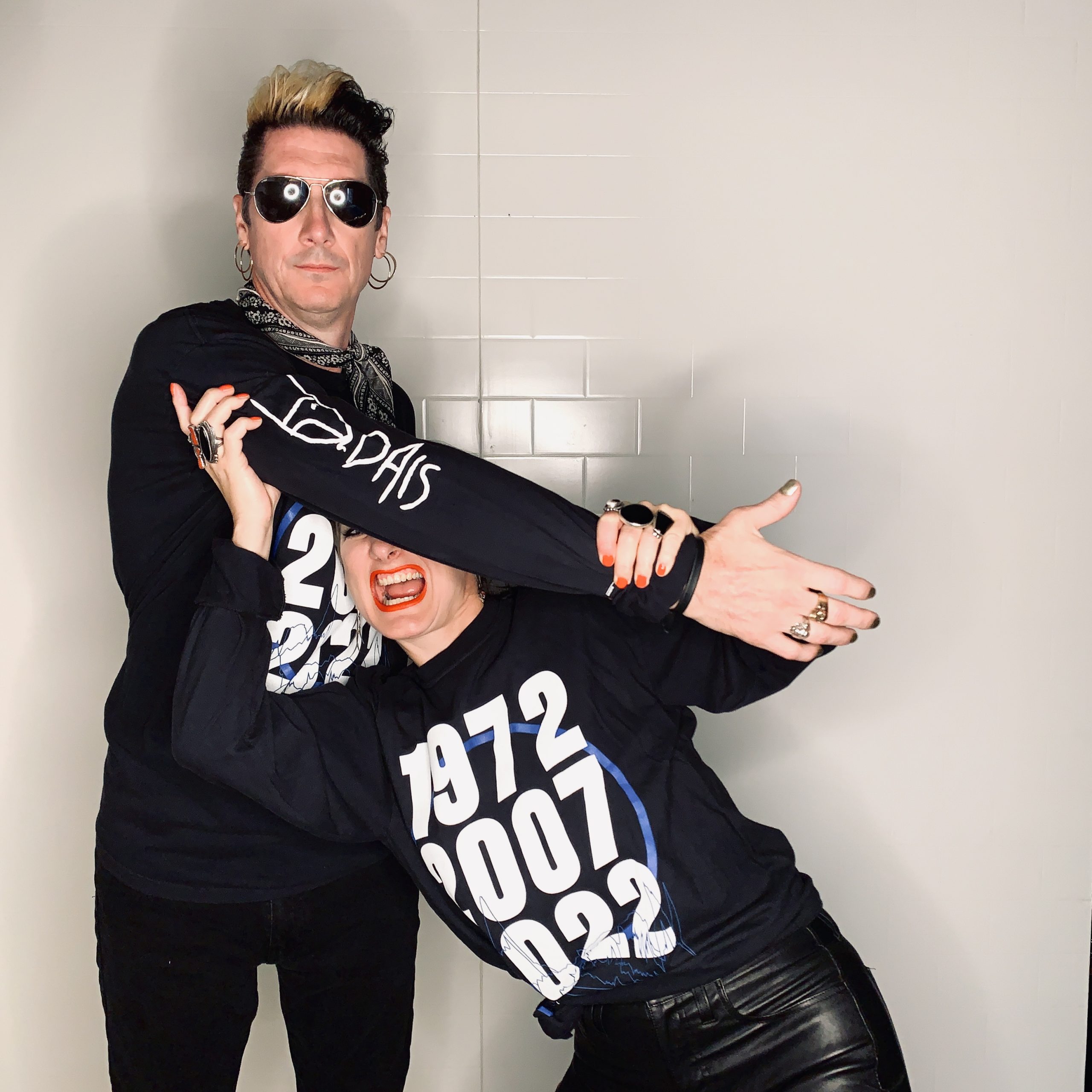

Partners
What does being in a partnership as a couple bring to ADULT.?
ALM: We’re working on a song, and then we go down to have dinner. You might put on a song or an album to get your creative juices flowing. Or you might be cooking and say, “I was thinking, why don’t we cut out that third verse?” You’re always in it.
NK: I say to our tax guy all the time, “Can we 100% write off our life?” Because there’s no difference between what is work and what is non-work. We try to be good at separating our two different relationships, so you don’t take criticism personally. You take it like it’s part of the work.
Would Becoming Undone have been the same record if it wasn’t created during a pandemic?
NK: Not at all. We noticed some artists were very productive during the pandemic. For instance, our friends Xeno & Oaklander did a lot of inspiring work during the time period, whereas I felt it was very difficult to work. One of the themes in both our audio and visual work is purpose. What was difficult during the pandemic and making this album was that feeling of, “What is the purpose?” Trying to find the voice of what we wanted this album to sound like took a lot. I’m proud of it, but it was a hard album to create emotionally.
"One of the themes in both our audio and visual work is purpose. What was difficult during the pandemic and making this album was that feeling of, 'What is the purpose?'"
Nicola Kuperus
Remix Art
You’ve done a lot of remixes in the past. Is that still part of ADULT.?
ALM: We rarely do them now. When we put out our first album in 2001, Resuscitation, it surprised us. The record got out there, and people were buying it. Then the remix requests started coming in—flattering, amazing stuff. That’s back when there was money in the music industry. I know a lot of people do a remix in like a day. We first get to know the song, and then we break it down. It takes forever to figure out what we’re going to do with it.
After the second album, we realized we had done like 23 remixes, and we were like, “We could have written two albums.” So, we started saying no.
NP: We’ve gotten to the point where we have to identify with the song. If we don’t feel like we can reshape it, there’s nothing we can do. But I do love remixes. It’s a great growing process because it gives the ability to look at how somebody else approaches something—tearing it apart and going, “Oh, wow.”
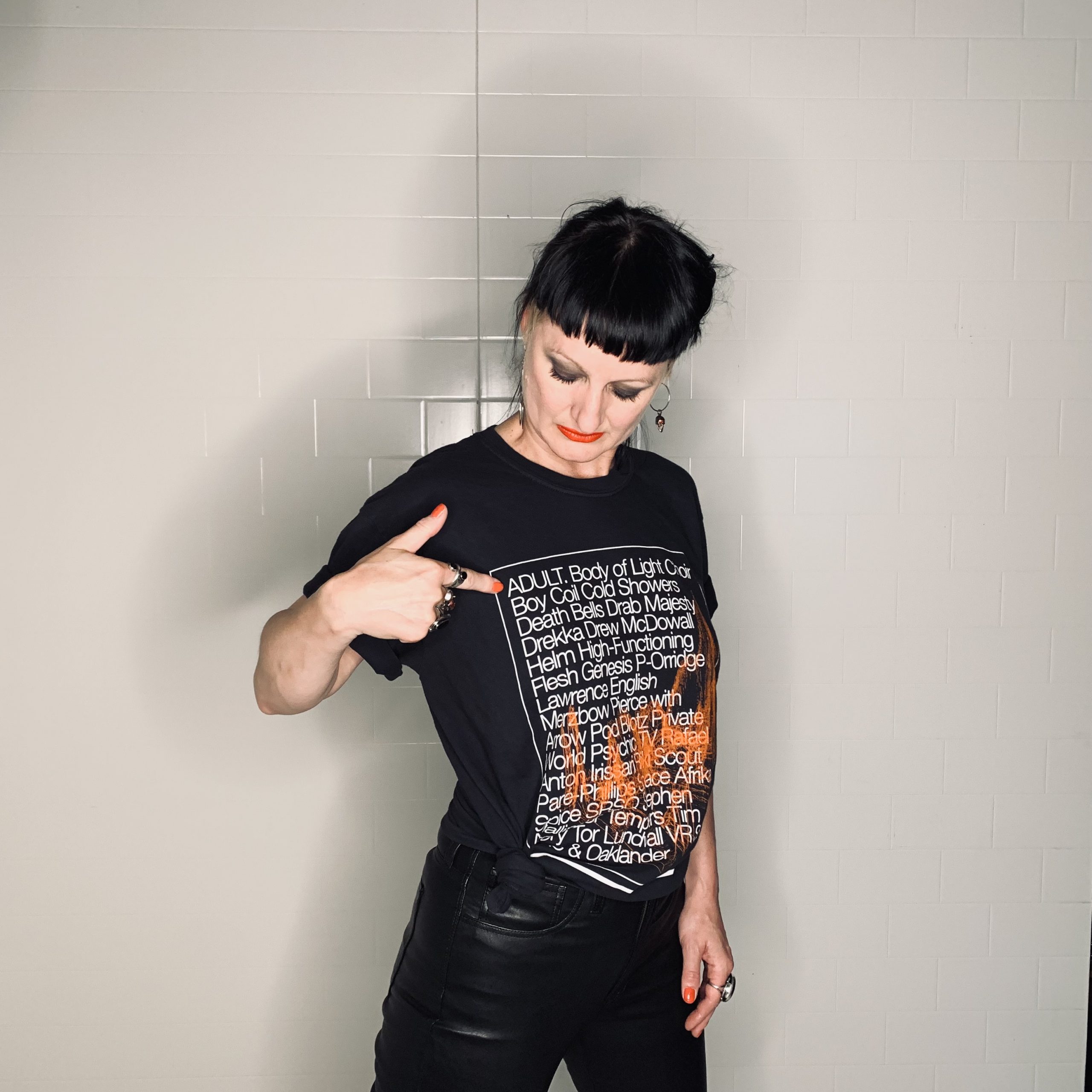
How do your opportunities in the art world come about?
ALM: It’ll be dry for a couple of years, and then you get an opportunity. For instance, we’re going to have an installation in Milwaukee in October, and that’ll be the first visual thing we’ve done in about four years.
Contributions, Influences, and Label
What do you think each of you bring to ADULT. that’s unique?
NK: I’m the wildcard. We’re both organized and specific, but I’m more erratic and like to mess stuff up. I’ll have some radical idea, and Adam can interpret it. He’s also really skilled at keeping things on track.
ALM: Nicola keeps the music alive. I’m very rigid, and I could kill it with overproduction. The songwriting is 50/50. One of the lead songs on the new album, she wrote 90% of it.
What are a few names from the ADULT. influence pool?
ALM: Things like Alan Vega and Suicide. Big Black is a huge influence.
NK: I look at us as a punk band, and that’s our ethos even though we are almost 100% electronic. We always really try to have our own spin on it.
What made you choose Dais as a label home for ADULT.?
ALM: We were looking for a change. Everything was going fine with the other labels. We were looking to sink our teeth into something that had a roster that made more total sense.
"The JUNO-106 absolutely changed my life and opened the door to everything. The second thing I think I got was a CR-78 and it’s a big part of the ADULT. sound too."
Adam Lee Miller
A Studio of Roland
You mention Roland in your bio. How did you discover the instruments, and what makes them so unique to you?
ALM: When I moved to Detroit in 1989, I started meeting people who were making music. A friend of mine was Brendan M Gillen, who runs Interdimensional Transmissions and is an important Detroit figure. He said, “I know your stuff, and I know the first piece of gear you should buy: the JUNO-106.” It absolutely changed my life and opened the door to everything. The second thing I think I got was a CR-78 and it’s a big part of the ADULT. sound too. Our studio is massively Roland. We’ve got a TR-808, a TR-707, and a TR-606. We’ve got an original Space Echo. I can’t even begin to list all the BOSS.
Now, the SPD-SX is our main thing live. We actually wrote the new album on the pads. I was using a sampler up until this tour and things got more and more percussive. I was like, “Why am I hitting these keys when I can make something a bit more kinetic for us and the audience?”
SPACE AFRIKA
Joshua Inyang and Joshua Reid of Space Afrika are longtime friends who create emotionally resonant dub-inflected ambient music that draws on the industrial landscape of their mutual Manchester hometown. Reid—now based in Berlin—and Inyang discuss their background and how they arrive at their atmospheric output.
On Manchester and Berlin
“A strong influence for me and Josh is industrialism itself. Manchester is built on this architecture influenced by the industrial revolution. There are two elements. One is the physical element: the gray, the brown, the orange bricks—the mood we have in the city. The other is the working-class history that runs through the whole city and inspires us to work. There’s a bleakness that rubs off on your mood day to day.” –Joshua Inyang
“Berlin has similarities with Manchester in terms of the concrete backdrop. It’s interesting because it’s a capital city, but it doesn’t share some of the same characteristics as capital cities like London or Paris. There’s a DIY ethos and a hardworking kind of artistic value here, which is a result of the wall coming down. I think there’s that kind of mobility of artists from different disciplines coming together.” –Joshua Reid
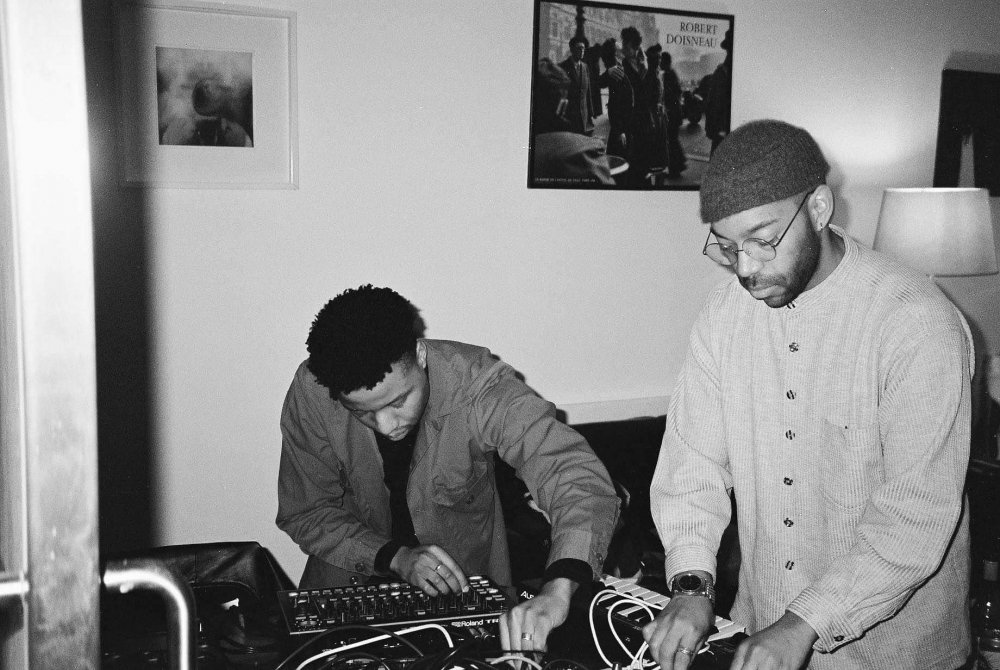
“Ambient can be an approach, it can be moods, it can be an environment. It doesn’t have to be limited to sound or music. You might say that the ambient room is the second room which, for people in Manchester, would be the bedroom. It’s ever-evolving, but it’s also getting opportunities for people who didn’t come from the traditional aspects of ambience.”
JOSHUA REID
“The term ambient has expanded to take a lot of new sentiments or angles. What seemed a limiting term in terms of genre is no longer fixed to these borders you would perceive ambient a decade ago. There’s been a huge progression in those types of music. The most ambient element of our sound currently is the pace. But I’d say the current album, Honest Labour, and our more progressive work aren’t just under that umbrella term.”
JOSHUA REID

On Distance
“It always comes full circle. We’re in two different countries mainly, but we’re in the same country almost every weekend at the moment. We record remotely the majority of the time, but there are frequent occasions where we exchange ideas in person. We might finish something at soundcheck.” -Joshua Inyang
“Even now, with this distance, we have the same headspace, share ideas through Instagram, whatever. We have internet access and can open up each other’s files. It’s super quick. It’s just like being in the studio. There’s more room for flexibility now than there would have been.”-Joshua Reid
On Pandemic Creation
“Early pandemic, we were in an experimental mode. We found freedom with regards to time and the pace of time and having more availability to spend at home or in the studio. It just felt like something we were never going to get again. That sparked off more focused studio work and expansion of the sound without the actual goal of arriving at a finished project.” -Joshua Inyang
On have you been through what i’ve been through?
“This was a four or five-day thing from idea to materialization right in the middle of the heaviest situation we’ve been in. We were swallowed up by this world. The only way to deal with it was to find some sort of release somehow. Focus away from everything that was happening.” -Joshua Inyang
“We had these ideas of going back and trying to muster up some of our influences, which came way before even the project began. The mixtape was like a necessary step into the next part of the album. We had the soundtrack as well as our close friendship. We made something that was a very heartfelt emotional record as well as stuff going on personally for both of us. It’s the sum of its parts.” -Joshua Reid
“The first fundamental connection was having the same name. There was a lot of groundwork before we even had a specific project. My early memories are of me and Josh meeting through school. We shared ideas, bouncing around town, discovering, doing what teenagers do. At the time, in Manchester, there was like a lot of grime bassline. We got inspired by seeing some of our peers making music. Now, we get influenced by each other. It could be a film someone’s watched that influences ideas for production. We’re constantly making new material, but we don’t have a strict structure. Our relationship goes outside of the music.”
JOSHUA REID
“There’s a lot of thinking outside the production element to the business side of things, aesthetics, and stuff like that. We both contribute in all of those areas. Our way of working ensures that no one takes up too much of one road compared to the other. It’s been a constant learning curve going back and forth.”
JOSHUA INYANG

On Collaborators
“It’s just through true living freely—being a fan online and reaching out and hitting it off. We’ve worked with each other our whole lives and are extremely secure within that partnership. Once that trust is there, other artists become part of the closer circle and that opens up opportunities. Honest Labour is one of the fruits of those kinds of collaborations.” –Joshua Inyang
On Honest Labour
“This album is about representing every human emotion across the spectrum. Having the voice as one of the key elements seemed super important. We were just making the music that made sense for what we’re trying to say.” -Joshua Inyang
On Dais
“We’re both massive fans of Psychic TV and like Genesis P Orridge stuff. Dais saw something in us and gave us total freedom of flexibility to explore our ideas. I think there’s an appreciation of the common threads in terms of approach, which is why that label seems super fitting for us.” -Joshua Reid
On Roland
“The JUNO-6 has an extremely beautiful classical character. And we’ve been fortunate to have, luckily, an original model here for the past seven years. I have the TR-8 which is really a wonderful box. It’s so thick sounding.” -Joshua Inyang
